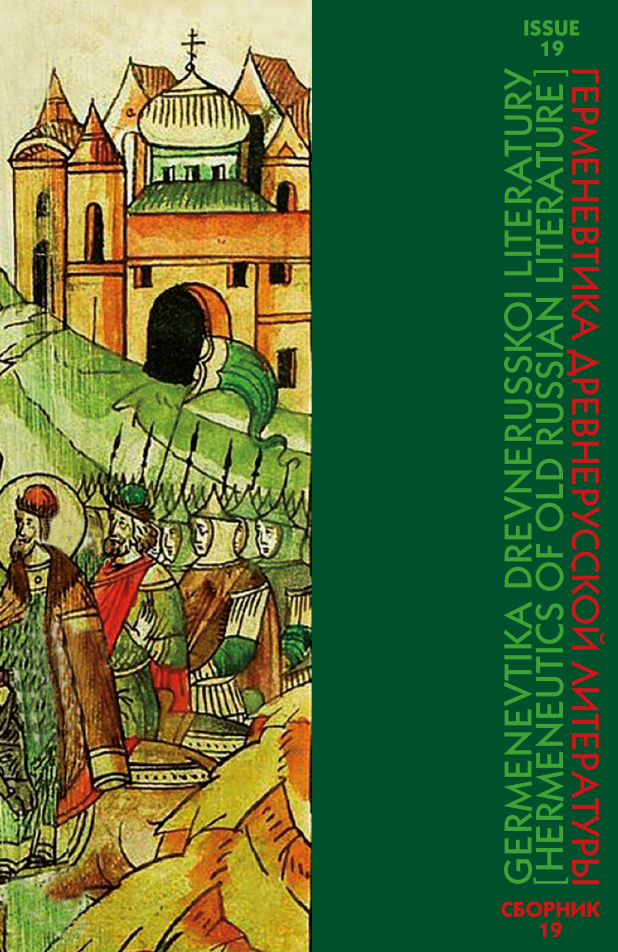Acknowledgements:
The article was completed with the support of the Russian Science Foundation (project No. 22-18-00005, “Iconography and Hagiography of the ʽLadder’ of St. John Climacus”).
Abstract:
The article analyzes 6 out of 22 Gospel parables of Jesus Christ, which are reflected in the text of monument of early Byzantine didactical literature — the Ladder of John Climacus. The material for the analysis was the Greek text of the Ladder, published by J.-P. Migne (Patrologia Graeca. T. 88) and unpublished Byzantine codices of the 10th–11th centuries, and text of the first Slavic translation of the Ladder according to the oldest Russian manuscript (middle of 12th century), as well as other Slavic manuscripts of the 14th century. One of the main motives of the Ladder as a literary monument is the memory of death. Gospel parables of eschatological character are the most important symbolic keys that help to understand the meaning of many fragments of the Ladder. The total number of explicit and implicit references to the Gospel parables of eschatological character is 41, including parables: of the Faithful Servant — 11, of Narrow Gate — 10, of the Great Banquet — 8, of the Ten Virgins — 5, of the Barren Fig Tree — 4, of the Workers in the Vineyard — 3. The article indicates examples of the use of these parables in the text of the Ladder, analyzes their connections with each other and with the general content of the book. Particular attention is paid to the symbolism of Narrow Path, which is genetically related to the parable of Narrow Gate.
REFERENCES
1 Popova, T.G. Pervyi slavianskii perevod Lestvitsy Ioanna Sinaiskogo [The First Slavonic Translation of the “Ladder” of John Climacus]. Moscow, St. Petersburg, Nestor-Istoriia Publ., 2020. 320 p. (In Russian)
2 Popova, T.G. “Pritcha o dobrom pastyre v Lestvitse Ioanna Sinaiskogo (na materiale rukopisei preslavskogo perevoda)” [“Parable of the Good Shepherd in the ‘Ladder’ of John of Sinai (Based on the Manuscripts of the Preslav Translation)”]. R’tsi slovo tvr’do. Sbornik v chest na prof. d.f.n. Tatiana Slavova [Rtsi slovo tvrdo. Collection in Honor of Prof. Ph.D. Tatiana Slavova]. Sofiia, University Publishing House, 2022, pp. 161–173. (In Russian)
3 Popova, T.G. “Pritcha o seiatele v Lestvitse Ioanna Sinaiskogo” [“Parable of the Sower in the ‘Ladder’ of John of Sinai”]. Palaeoslavica. International Journal for the Study of Slavic Medieval Literature, History, Language and Ethnology, vol. 30, no. 1, 2022, pp. 355–367. (In Russian)
4 Popova, T.G. “Iazyk i grafiko-orfograficheskaia sistema drevneishei slavianskoi rukopisi Lestvitsy Ioanna Sinaiskogo” [“Language and Graphic and Spelling System of the Oldest Slavic Manuscript of the ‘Ladder’ of St. John Climacus”]. Palaeoslavica. International Journal for the Study of Slavic Medieval Literature, History, Language and Ethnology, vol. 21, no. 1, 2012, pp. 15–57. (In Russian)
5 Corneanu, Nicolae. “Introducere.” Ioan Scărarul. Scara Raiului precedată de viaţa pe scurt a lui Ioan Scolasticul şi urmată de Cuvîntul către păstor. Ediţia a III-a. Traducere, introducere şi note de mitropolit Nicolae Corneanu, Timişoara, Amarcord-Publ., 1998, pp. 9–115. (In Romanian)
6 Garzaniti, Marcello. “Bible and Liturgy in Church Slavonic Literature. A New Perspective for Research in Medieval Slavonic Studies.” Medieval Slavonic Studies. New Perspectives for Research, ed. J.A. Álvarez-Pedrosa, S. Torres Prieto. Paris, Institut d’Etudes Slaves, 2009, pp. 127–148. (In English)
7 Garzaniti, Marcello. “Le citazioni bibliche nella letteratura slavo-ecclesiastica.” Studi Slavistici, t. 1, 2004, pp. 330–335. (In Italian)
8 Joest, C. “Johannes Klimakos.” Lexicon für Theologie und Kirche, Bd. 5 (Hermeneutik bis Kirchengemeinschaft), 3, völlig neu bearb. Aufl. Freiburg, Basel, Rom, Wien, 1996, pp. 925-926. (In German)
9 MacRobert, M. Catherine. “On the Role of Memory and Oral Tradition in the early Transmission of the Church Slavonic Psalter Text.” Khristiianska agiologiia i narodni viarvaniia. Sofiia: “Iztok Zapad.” Sofia, “Iztok Zapad” Publ., 2008, pp. 340–355. (In English)
10 Рopova, Tatiana G. Die Leiter zum Paradies des Johannes Klimakos. Katalog der slavischen Handschriften. Köln – Weimar – Wien, Böhlau, 2012. 1037 p. https://doi.org/10.7788/boehlau.9783412215163 (In German and Russian)






